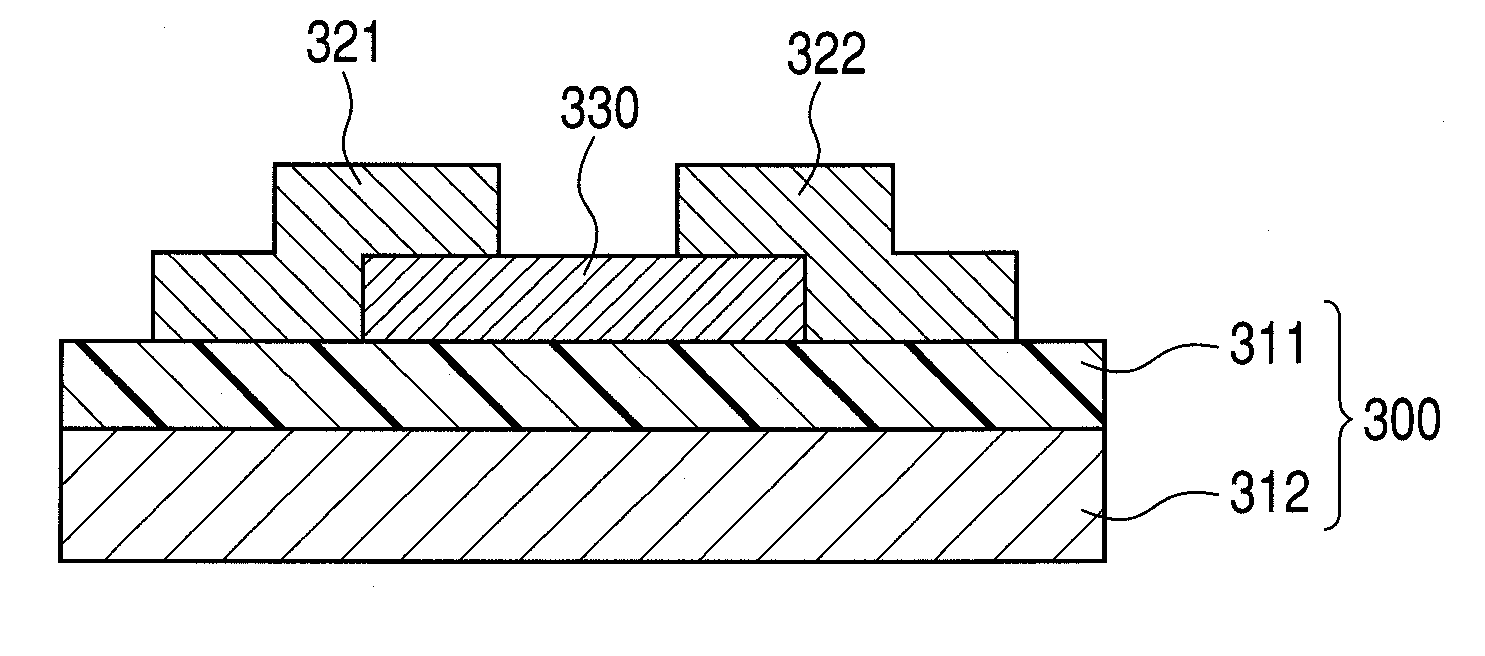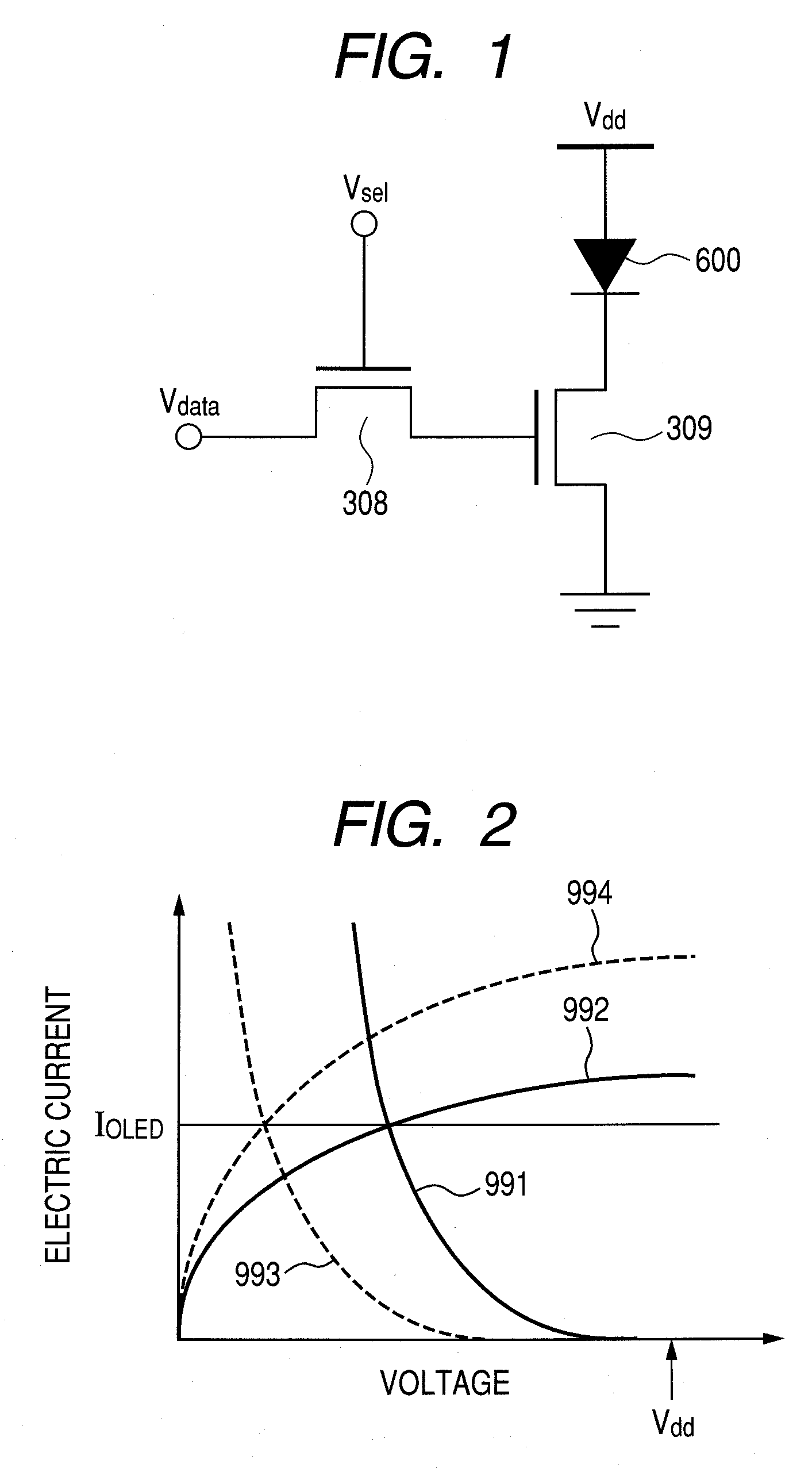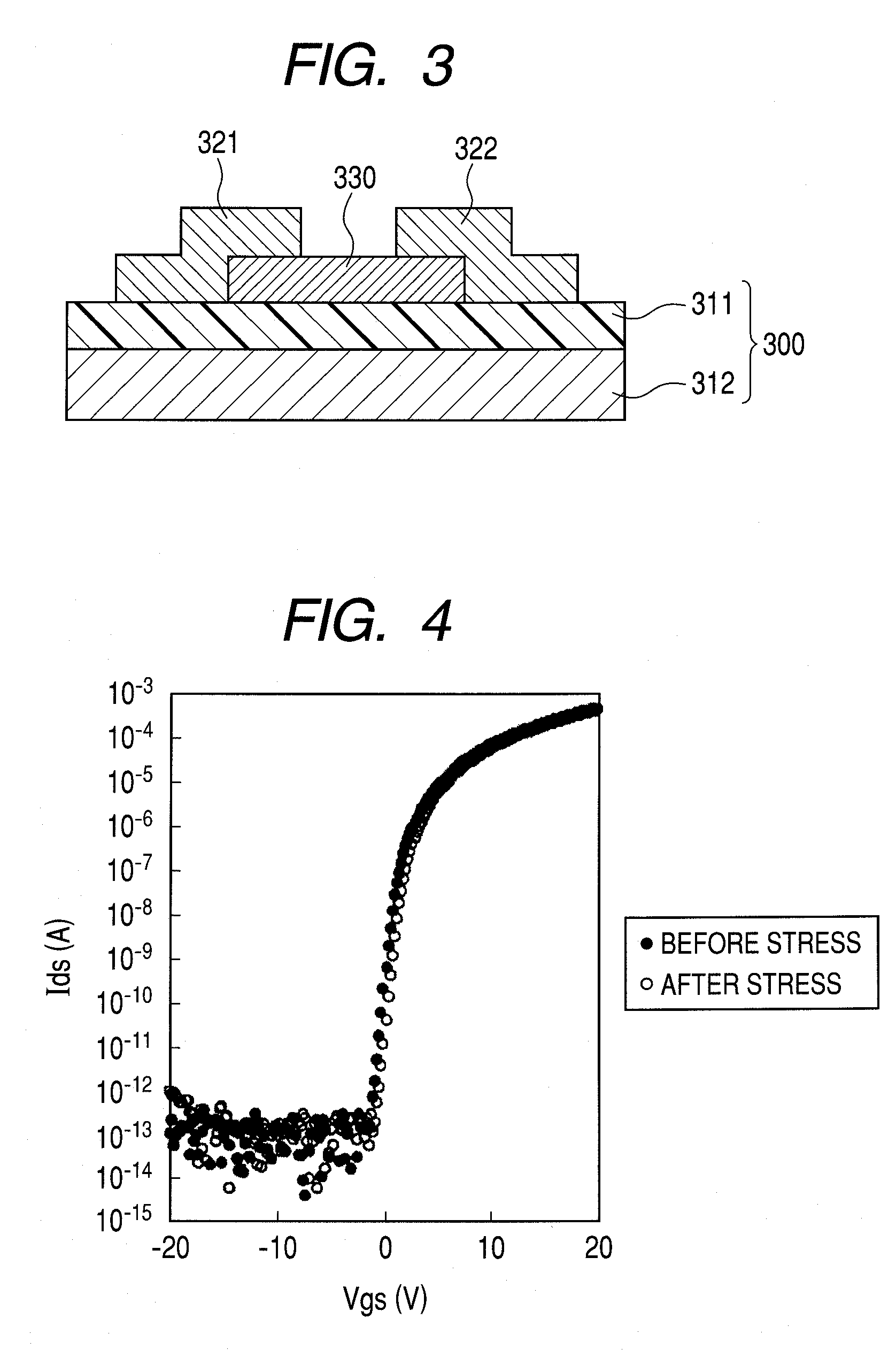Method for controlling threshold voltage of semiconductor element
- Summary
- Abstract
- Description
- Claims
- Application Information
AI Technical Summary
Benefits of technology
Problems solved by technology
Method used
Image
Examples
embodiments
[0167]Although the embodiments of the present invention will be described hereunder, the present invention is not limited to the following embodiments.
first embodiment
[0168]In the first embodiment, an amorphous GZO-TFT of a reverse stagger type was fabricated on a glass substrate through the following procedures. The sectional view of the TFT is shown in FIG. 9.
[0169]First, a glass substrate (Corning 1737) was cleaned, and was used as a substrate. On the substrate, a titanium-gold laminated film having a total thickness of 50 nm was laminated by an electron beam vapor deposition method, and the laminated film was patterned by a lift-off method to obtain the gate electrode 312. Thereon, a SiO2 film having a thickness of 200 nm was laminated by an RF magnetron sputtering method (film forming gas: Ar, film forming pressure: 0.1 Pa, and applied power: 400 W) using SiO2 as a target. This was patterned by etching to obtain the gate insulating layer 311. Thereon, an amorphous IGZO having a thickness of 20 nm was laminated by an RF magnetron sputtering method (film forming gas: O2 (5% by volume)+Ar (95% by volume), film forming pressure: 0.5 Pa, and appl...
second embodiment
[0176]In the second embodiment, the system wherein external circuits are added to the semiconductor device was established. The connections are schematically shown in FIG. 13.
[0177]A TFT driving circuit is connected to the TFT, and contains the power source and the like for making the TFT carry out the intended operations (such as the driving of loads (not shown) connected to the TFT). The Vth measuring circuit can be connected to the TFT optionally switching to the TFT driving circuit, and measures the Vth of the TFT and outputs the Vth to the light emitting diode control circuit. In the second embodiment, the Vth measuring circuit is made to have a variable voltage source and an electric current measuring device, and has a configuration for measuring the transfer characteristics of the TFT to calculate Vth and output the Vth to the light emitting diode control circuit. The memory stores the lookup table for specifying the electric current to be applied to the light emitting diode ...
PUM
 Login to View More
Login to View More Abstract
Description
Claims
Application Information
 Login to View More
Login to View More - R&D
- Intellectual Property
- Life Sciences
- Materials
- Tech Scout
- Unparalleled Data Quality
- Higher Quality Content
- 60% Fewer Hallucinations
Browse by: Latest US Patents, China's latest patents, Technical Efficacy Thesaurus, Application Domain, Technology Topic, Popular Technical Reports.
© 2025 PatSnap. All rights reserved.Legal|Privacy policy|Modern Slavery Act Transparency Statement|Sitemap|About US| Contact US: help@patsnap.com



